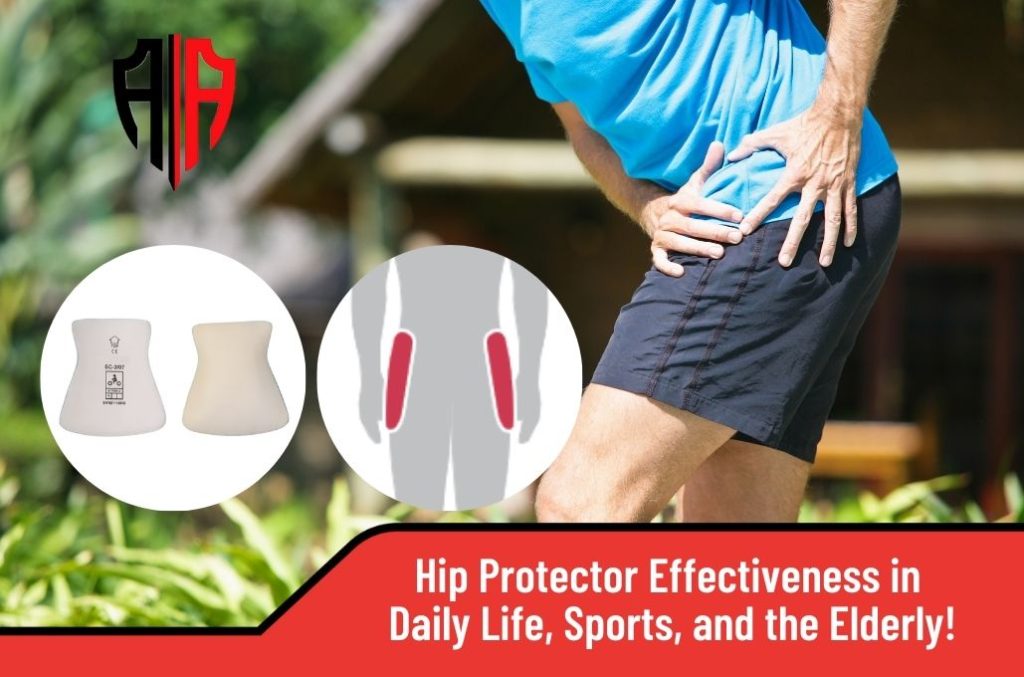Effectiveness of Hip Protectors
A large body of evidence supports the use of hip protectors as a way to prevent hip fractures in high-risk populations.
Hip protectors are effective in preventing fractures in residents of long-term care facilities.
They are also effective in preventing hip fractures in other high-risk populations, such as those who have had a previous fracture or those who are taking medications that increase their risk for fracturing.
There is variability in the cost-effectiveness of hip protectors, but they are generally considered to be cost-effective.
But the user has to wear this almost all the time.
Check the best Hip protectors here!
Hip Protectors – What Are They and How Do They Work?
Hip protectors are devices torn on the hips to reduce the chance of falls and subsequent injuries. They come in three main types: hard plastic shields, soft pads, and mixed hard and soft shields.
Each type has its benefits and drawbacks. Hard plastic shields shunt force away from the hip, while soft pads absorb shock. Mixed hard and soft guards provide the best of both worlds.
Hip protectors have been shown to be effective in reducing falls and subsequent injuries in daily life, sports, and for elderly populations.
Hip protectors are very common among those who ride bikes, do off-road biking, and the elderly.
Do They Work for Elders?
There is moderate-quality evidence that hip protectors reduce the risk of hip fracture in institutional settings.
This means that they are likely effective when used in hospitals, nursing homes, and other long-term care facilities. However, their efficacy in community settings (like people’s homes) is less clear.
A new study has been released which provides evidence that hip protectors can reduce the risk of fracture threefold in residential aged care residents who are compliant and meet specific criteria.
Also, when used for sports, it has shown great effectiveness in reducing impact.
Should Hip Protectors Be Used?
There is a lot of debate surrounding the use of hip protectors. Some studies show that they effectively reduce hip fractures, while other studies suggest that they have little or no effect.
Older people who are at more risk of falling should wear hip protectors all the time.
A new study has recently been released, providing evidence that hip protectors can reduce fracture risk threefold in residential aged care residents who are compliant and meet certain criteria.
Will Hip Protector Prevent Breaking a Bone?
There is insufficient evidence that hip protectors reduce the risk of a pelvic fracture. However, it is still advisable to wear hip protectors on the hips to help prevent bone fractures.
They are most commonly used in older people at a higher risk for breaking a hip, but they can also be used by people who participate in contact sports and those who live in the community.
There is some evidence that suggests that hip protectors may reduce the number of hip fractures in people living in residential care, but there is no clear evidence that they provide any benefit for those living in the community.
Comfort and Peace of Mind?
There was a lot of controversy around wearing hip protectors as people were unsure if they worked. However, recent studies have shown that hip protectors are somewhat effective in preventing hip fractures daily and during sports activities. They can also provide peace of mind for elderly individuals at a higher risk for hip fractures.
Soft hip protectors are comfortable and safe to wear all day long.
3 Types of hip protectors
There are three primary hip protectors: soft pads, hard shells, and composite materials.
- The most common type of hip protector is the soft pad, which is used for shock absorption. It is made up of a layer of foam or gel that cushions the impact in case of a fall.
- Hard plastic shields for the greater trochanter are also popular and provide more coverage than soft protectors. Finally, semi-hard protectors offer a compromise between the two with some protection against impact and less bulk.
- The semi-hard protector is a hard shell that is inserted between two soft compressible pads. The hard protector is a solid shield that completely covers the hip area.
The most common type of protector is the soft hip protector made from foam or other similar materials.
Studies on the effectiveness of Hip Protectors
There is a lot of research on the effectiveness of hip protectors. Studies have shown that hip protectors are worn in 60% of falls and that fall risk is reduced by 3-fold when wearing a hip protector at the time of falling.
Studies have been conducted to determine the effectiveness of hip protectors in different settings. The early reports from randomized trials indicated that hip protectors should be used for those living at home.
However, more recent evidence has shown that their effectiveness is uncertain in an institutional setting. There was no significant difference between those who wore hip protectors and those who did not know when living at home.
Conclusion
As per research, it has been found that hip protectors are helpful, but more research is needed. In this case, many would recommend that you wear hip protectors when doing something dangerous.
Older people can simply wear hip protectors whenever they are moving around to stay safe.
Check the best Hip protectors here!

